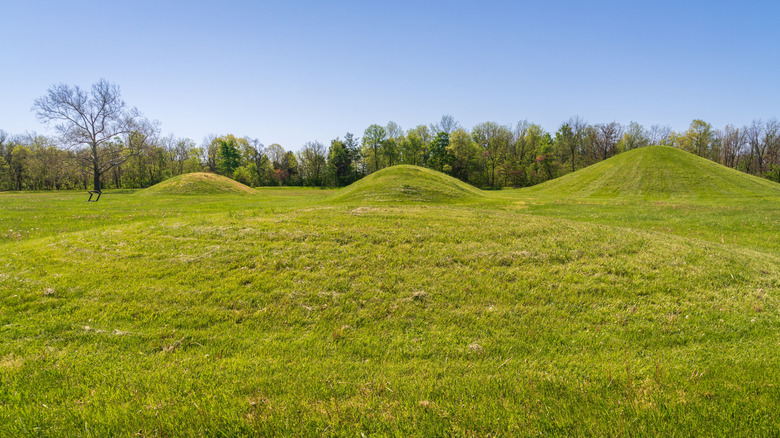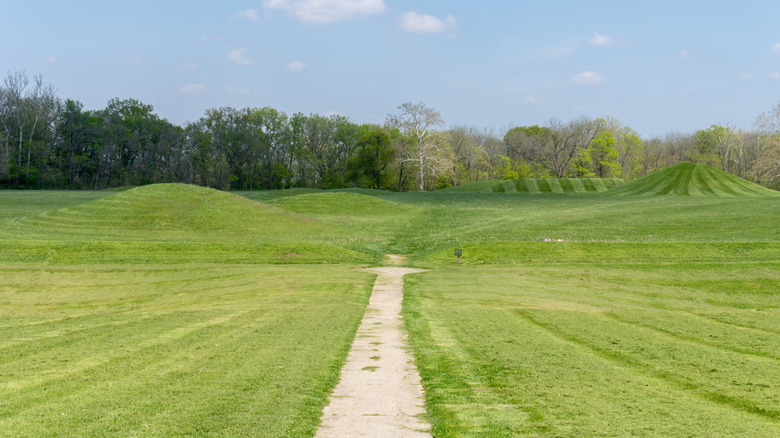These UNESCO-Designated Archaeological Sites By The Ohio River Offer A Rare Glimpse Into Ancient America
You might be surprised to stumble upon a few baffling sites in random places across Ohio, that, without prior knowledge, seem like architectural enigmas. In Hillandale, there's a "bridge to nowhere" that mystifies explorers and photographers alike. Meanwhile, all around the state, the Storybook Trails weave fairytales into nature, making for a unique adventure. With a little background information, though, you can easily find the sources and purposes of these creations. At Ohio's only UNESCO World Heritage designated site, the Hopewell Ceremonial Earthworks, the purposes of its creations are less certain, and little is known about the ancient civilization that made them.
What we know about the Hopewell culture is it was a civilization that existed in North America roughly between 100 B.C. and 400 A.D. The ancients didn't leave any written records, and we don't even know what the civilization called themselves, but the Hopewell Earthworks are the best surviving evidence of this ancient community. The eight preserved earthwork sites are located along Ohio River tributaries in three separate locations miles apart. They are made up of vast geometric shapes dug into fields and artificial mounds. The earthworks were once used for ceremonies, cleverly designed to align with astronomical cycles. Access to one of the most historically significant earthworks sites was previously limited, being part of a private country club for over 100 years, but as of 2025, visitors can explore all eight of the incredible sites.
The history and significance of the Hopewell Ceremonial Earthworks
Even without written records, the Hopewell Ceremonial Earthworks prove that the people who lived in North America long before it was colonized by Europeans had a deep understanding of natural phenomena and architecture. "The people who built these earthworks achieved something extraordinary ... in how they wove a profound understanding of geometry and astronomy into these places," Jennifer Aultman, chief historic sites officer at the Ohio History Connection, told National Geographic.
One of the sites, called The Octagon Earthworks, comprises a large circular structure connected to a large octagon-shaped enclosure. It tracks the lunar cycle — which is especially impressive considering that the lunar cycle lasts 18.6 years. Its constructed angles correspond with astronomical positions on the horizon, designating where the moon rises and sets through the cycle. It's also astronomical in size: "You could put four Roman Colosseums inside just The Octagon," archaeologist Brad Lepper told BBC.
As for the purpose of these earthworks, all we have are theories. What we know is that they weren't homes. While traces of the Hopewell people's settlements have been found scattered around Ohio's rivers, none lie within the earthworks themselves. It's most likely that people from dispersed, far-flung villages gathered together at the sacred earthworks for religious or social reasons. Ceremonial artifacts have been found at the sites, including conch shells brought all the way from the Gulf Coast and a stone sculpture of a person holding a decapitated head. Perhaps the biggest mystery of the Hopewell civilization, though, is that it disappeared around 400 A.D. without a trace.
Visiting the Hopewell Ceremonial Earthworks
The eight Hopewell sites are spread across three locations in Ohio: Newark, Chillicothe, and Oregonia. If you're flying in, the Cincinnati/Northern Kentucky International Airport is a convenient starting point, about a 50-mile drive from the Oregonia Earthworks location. You could start your journey by exploring Cincinnati's spectacular street art before giving way to the ancient geometry of Ohio's pastures. The Oregonia site is home to an earthwork called Fort Ancient. In addition to being the largest hilltop enclosure of the sites, it also includes a Native American history museum and scenic walking trails. The grounds are open Wednesday through Sunday.
From Oregonia, it's about an hour drive to the Hopewell Culture National Historical Park in Chillicothe. There are five earthworks sites here. One of the most striking among them is the Mound City Group, made up of 23 mounds and a low, encircling wall. In the 1920s, archaeologists found the cremated remains of 20 people buried at the site, including some assumed to have held high positions in the ancient society. The final earthworks site, the Newark Earthworks, is about a 1.5-hour drive from Chillicothe. Archaeologist Brad Lepper told This Local Life that the Newark Earthworks were "the Mecca of this continent" 2,000 years ago. The site includes the Great Circle — 1,200 feet in circumference — and the astronomical Octagon. Lepper himself gives free tours of the Great Circle on the first Friday of the months of April through November, and tours of the Octagon on the third Fridays. Otherwise, the sites are free to visit on your own time from Wednesday through Sunday.


